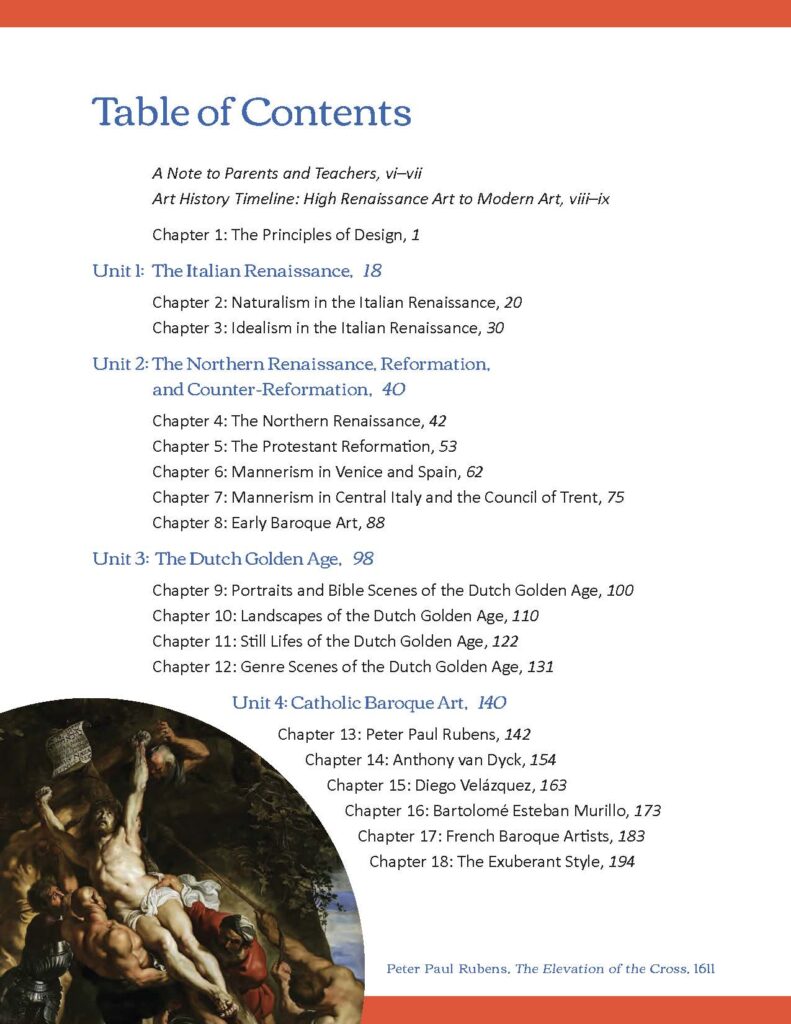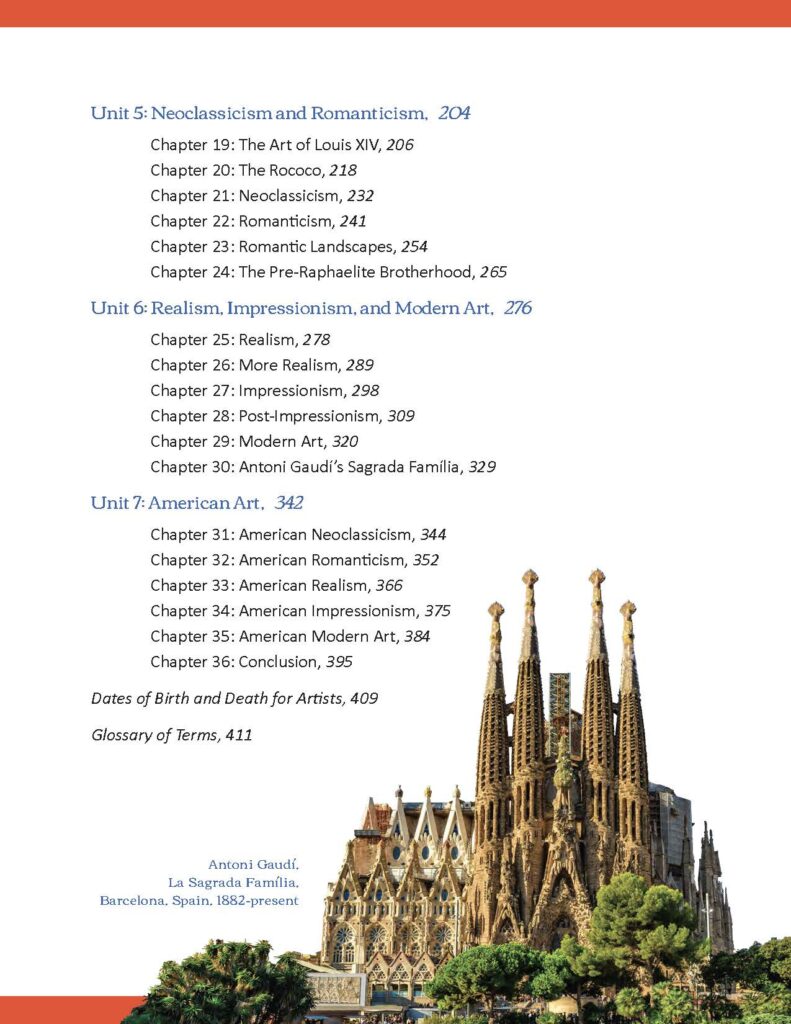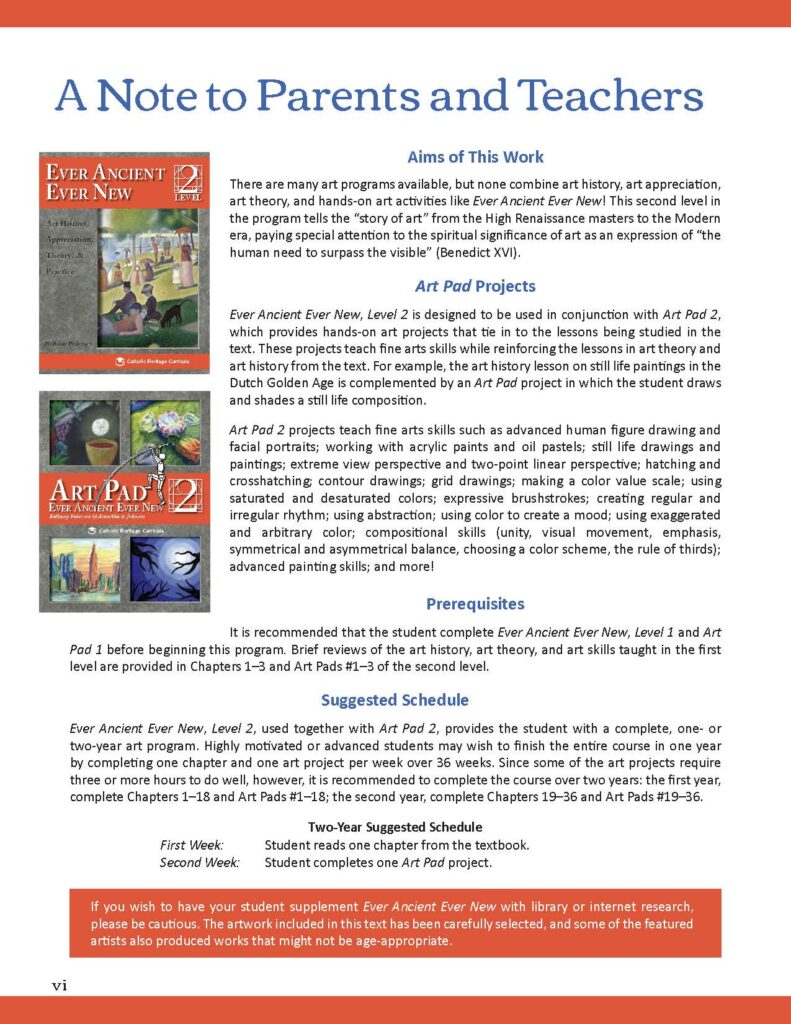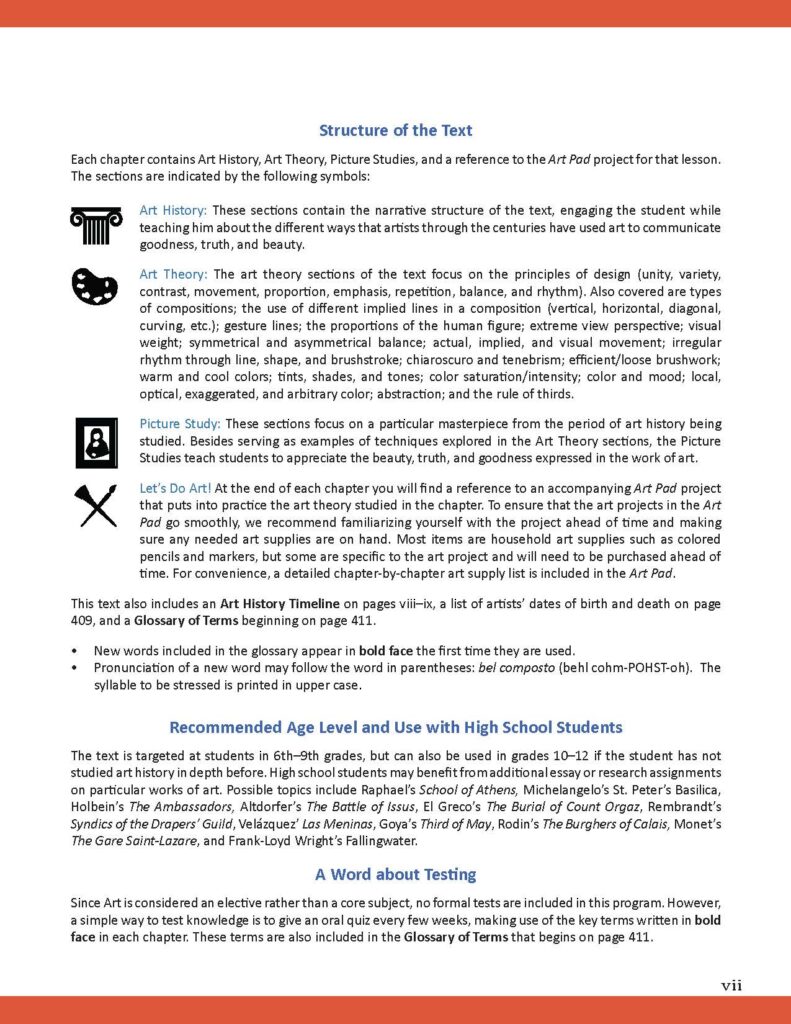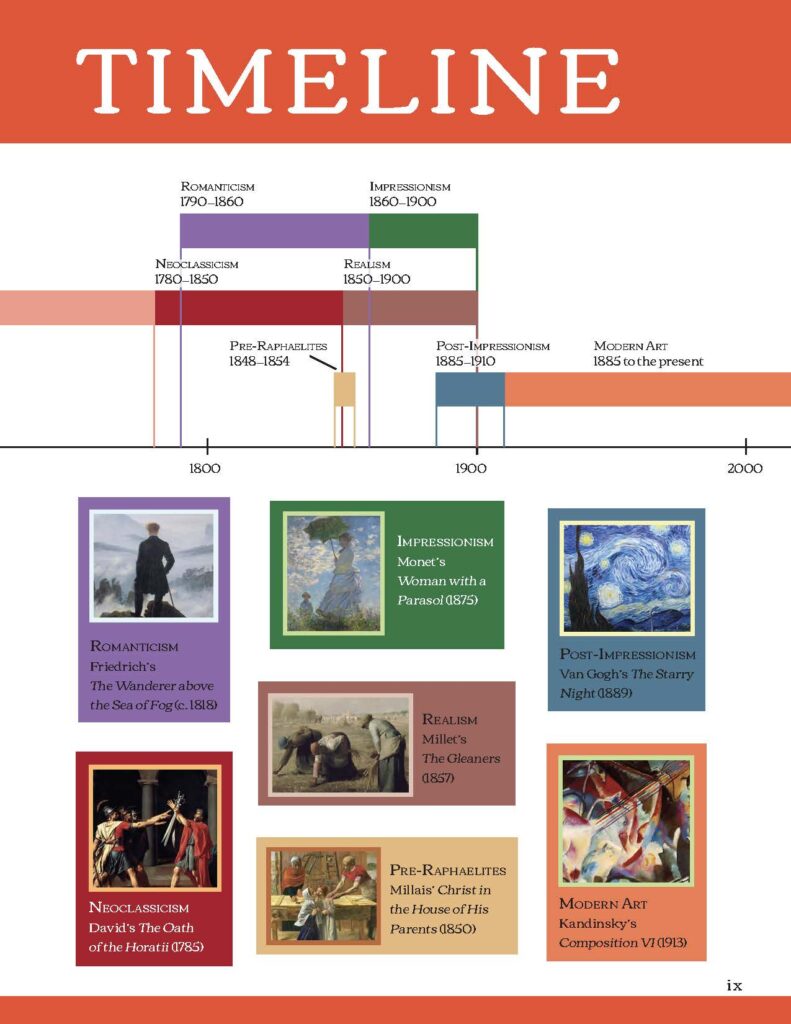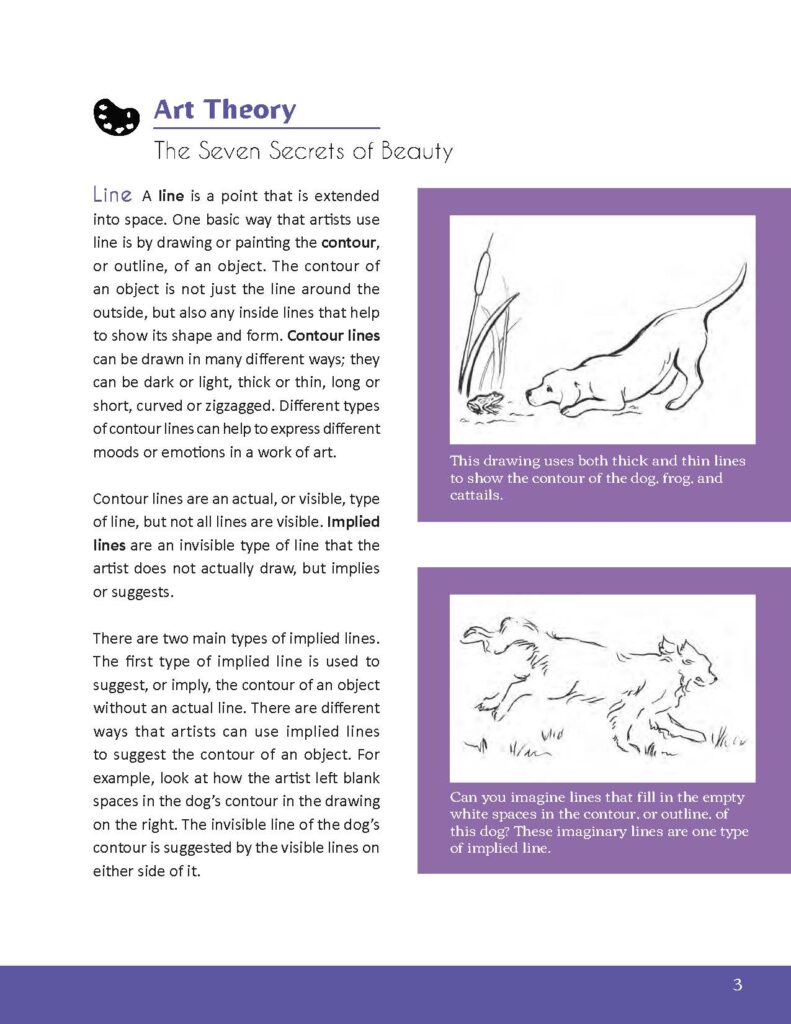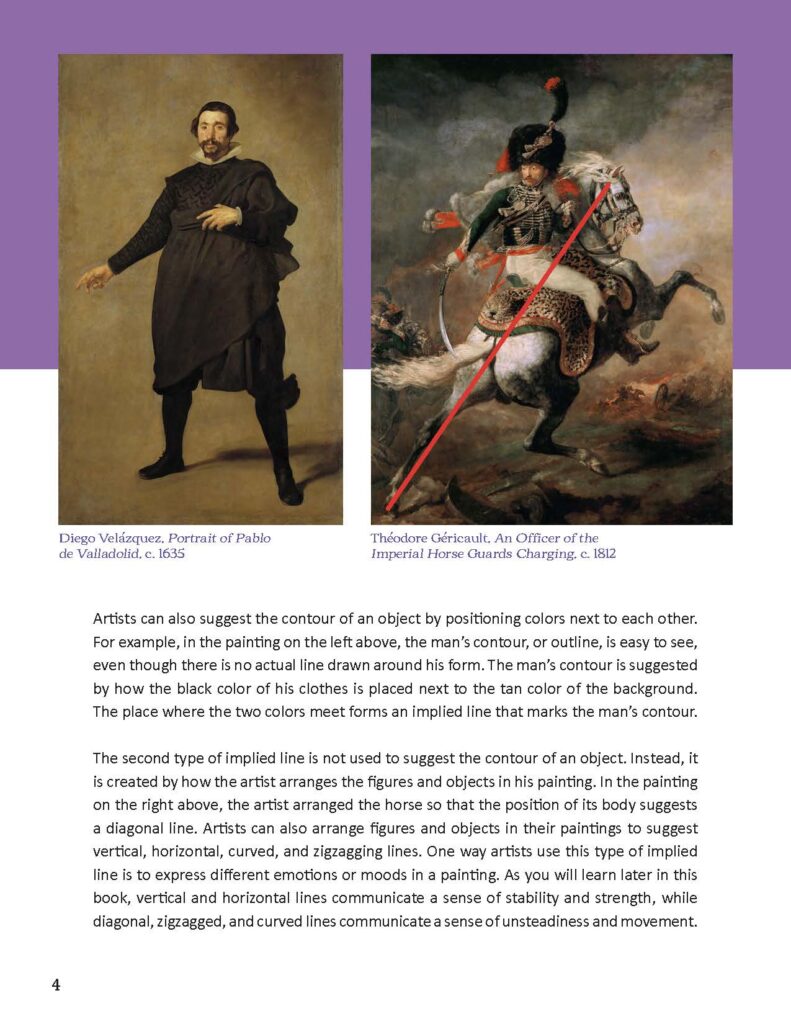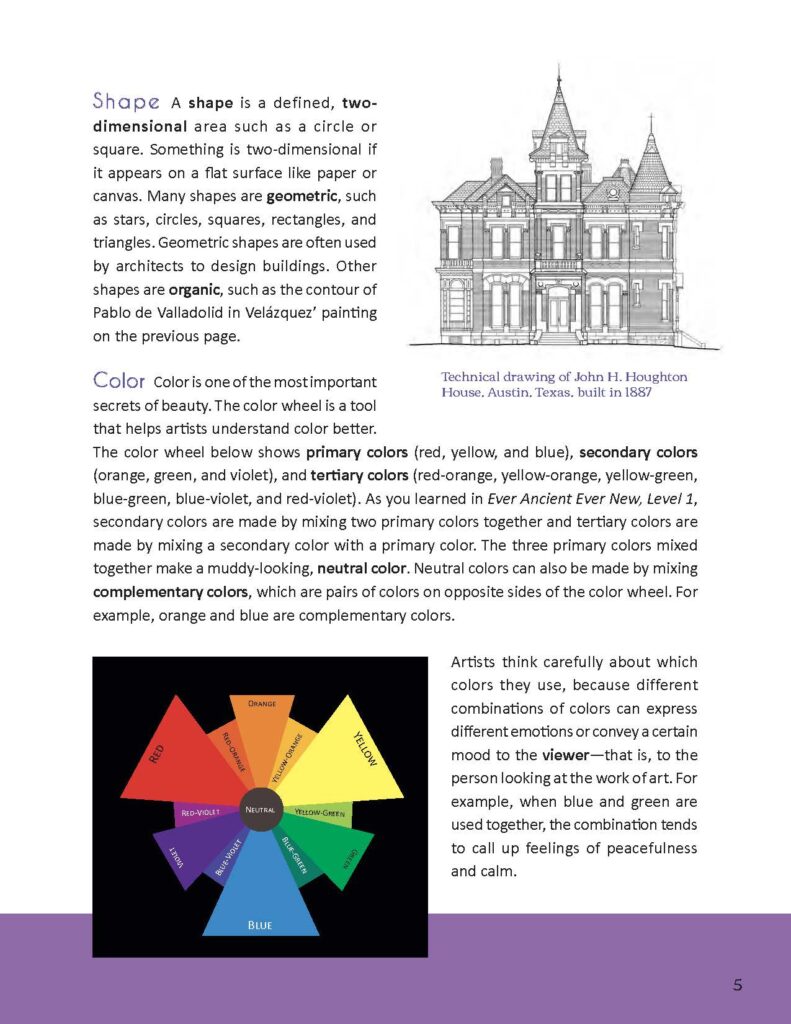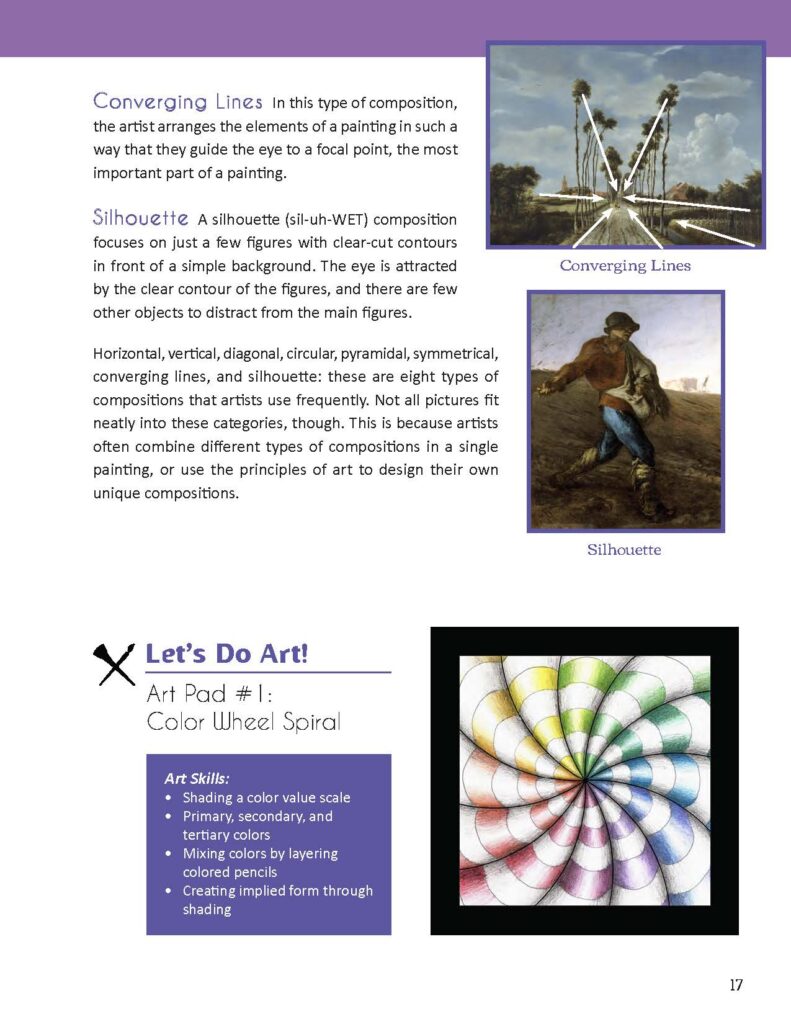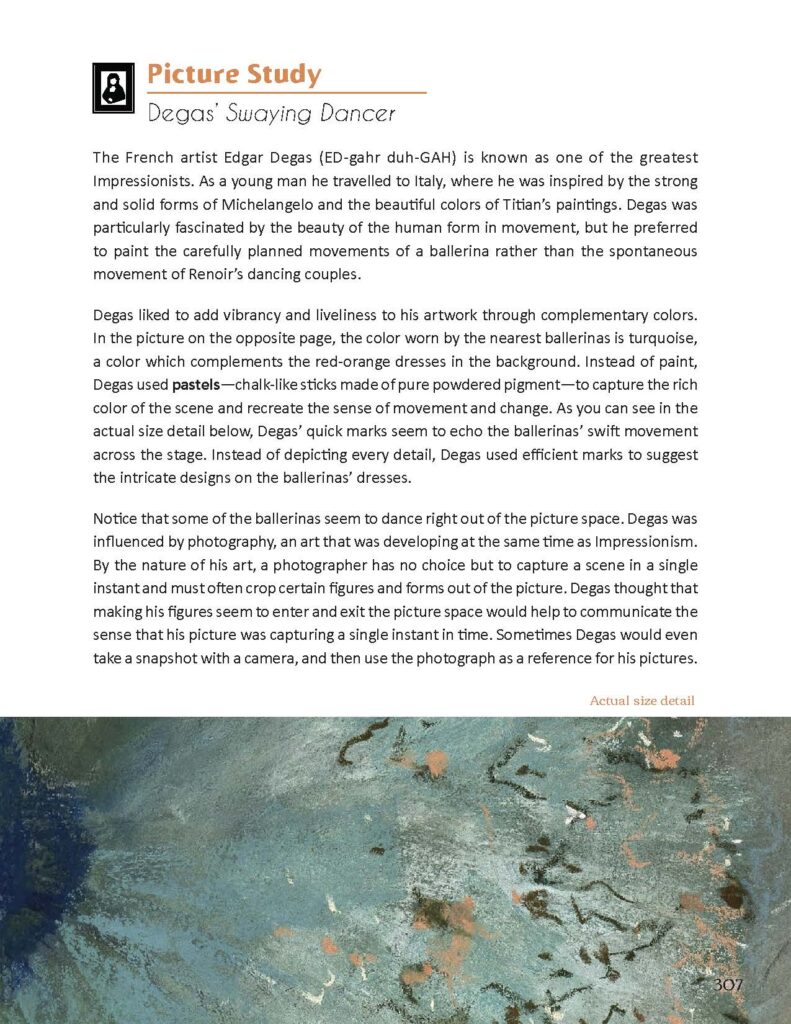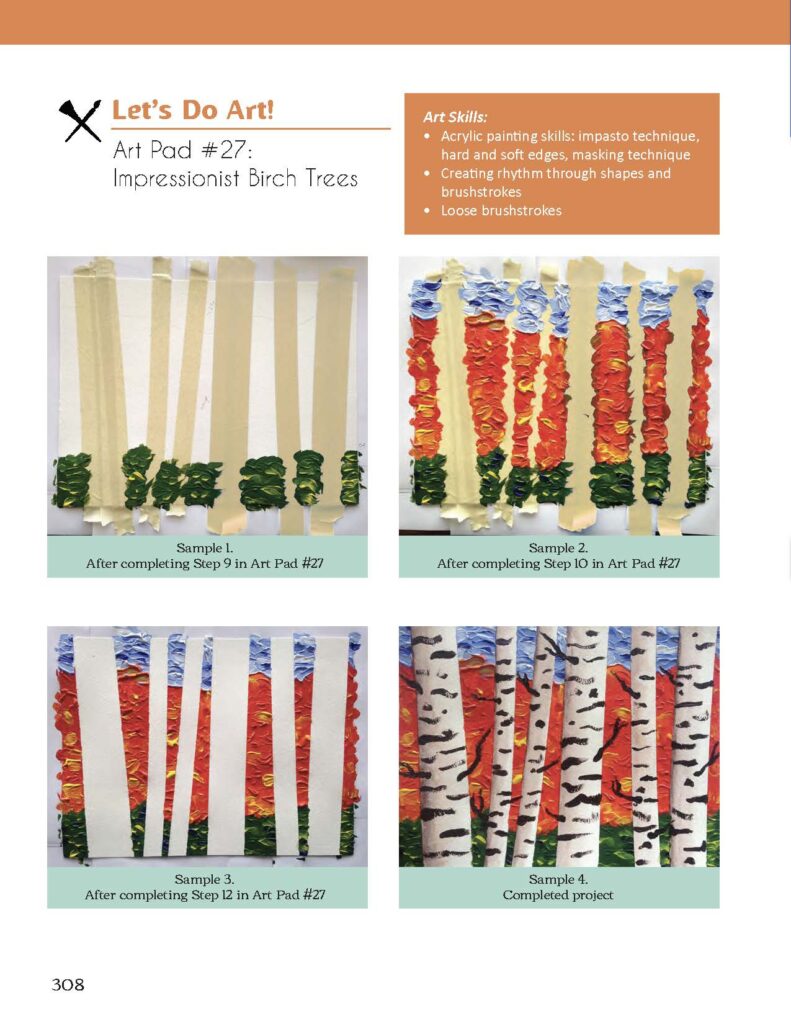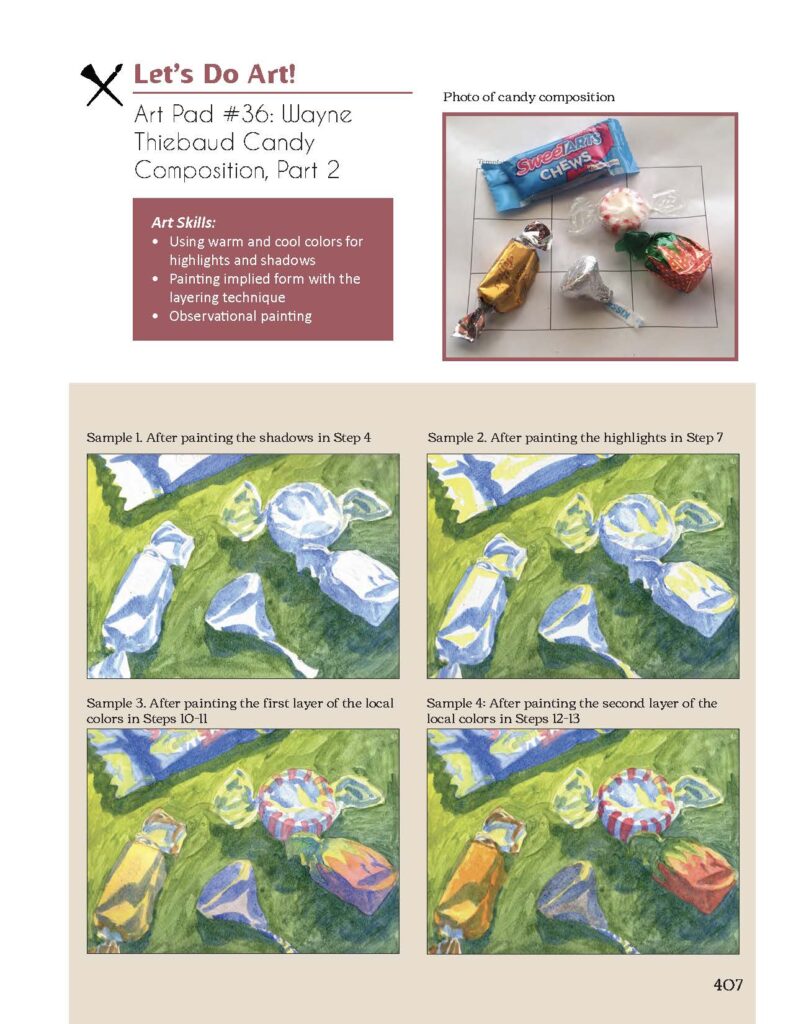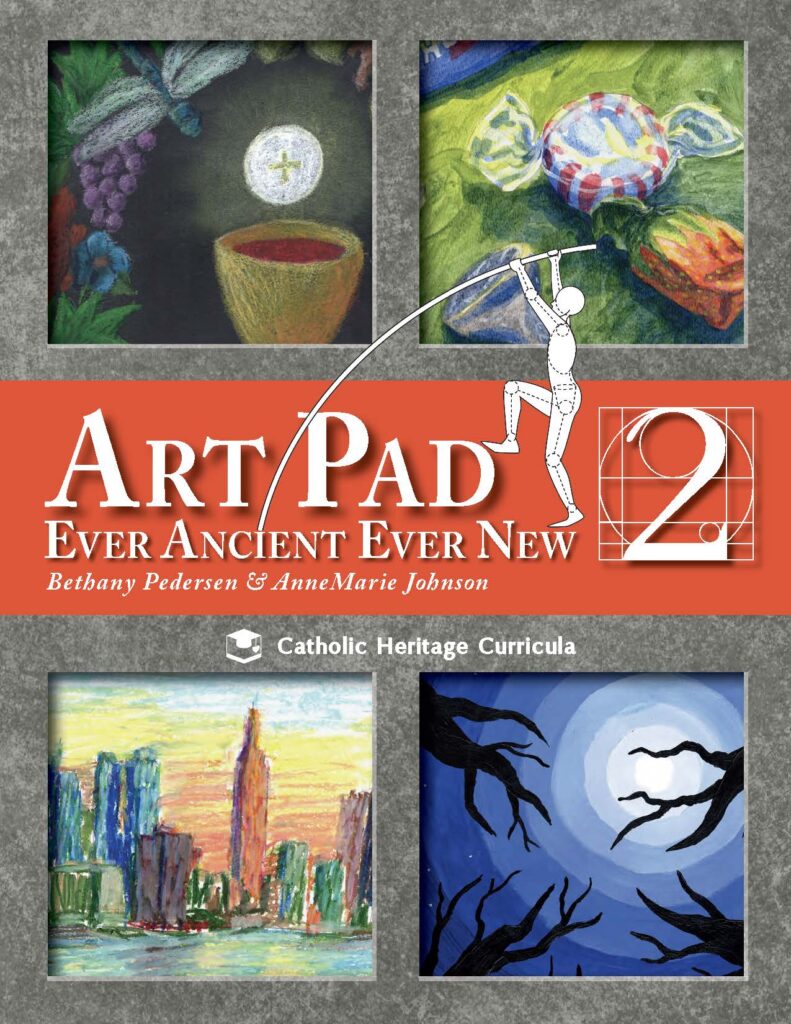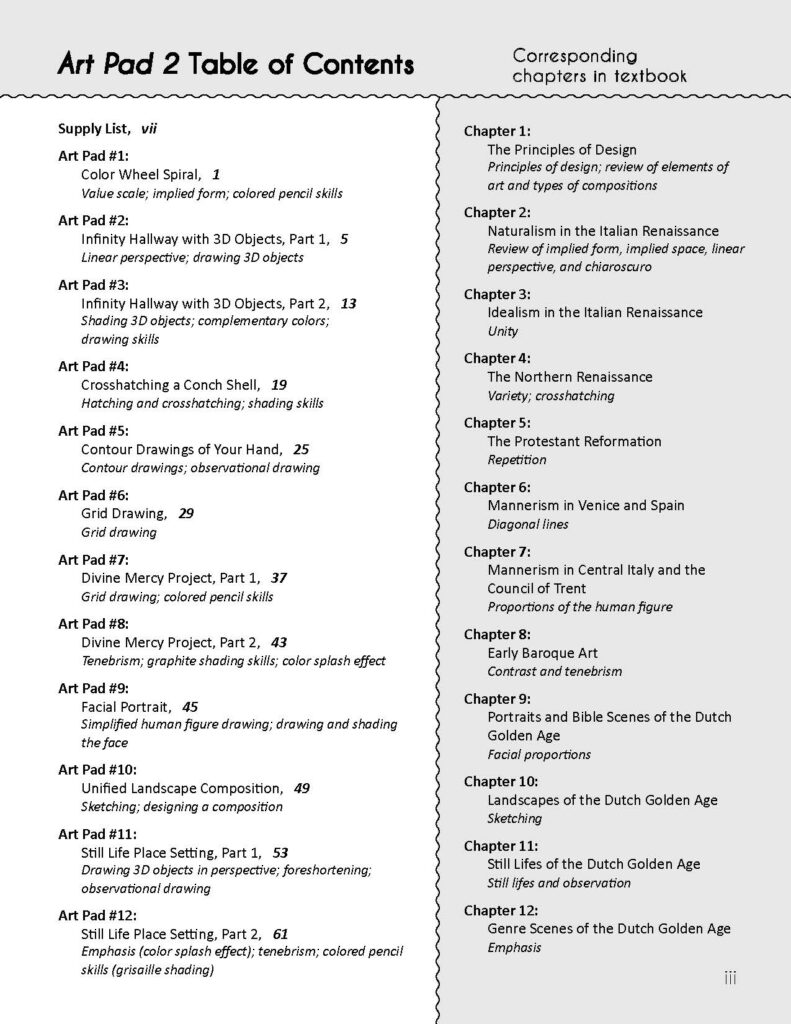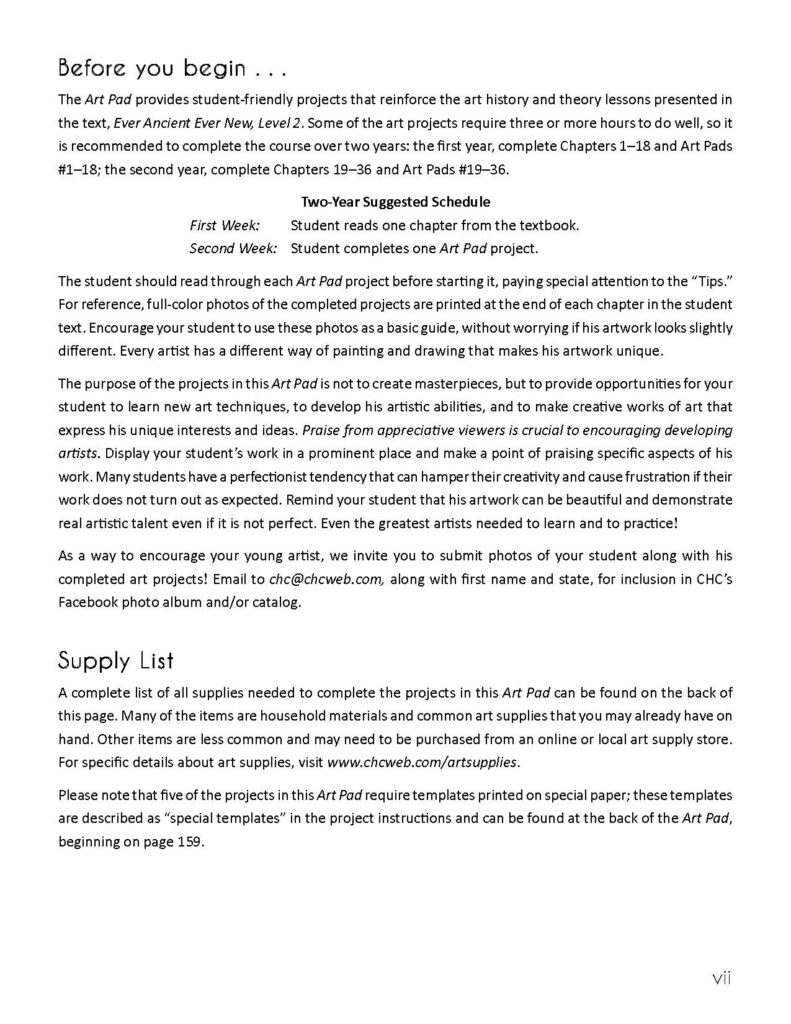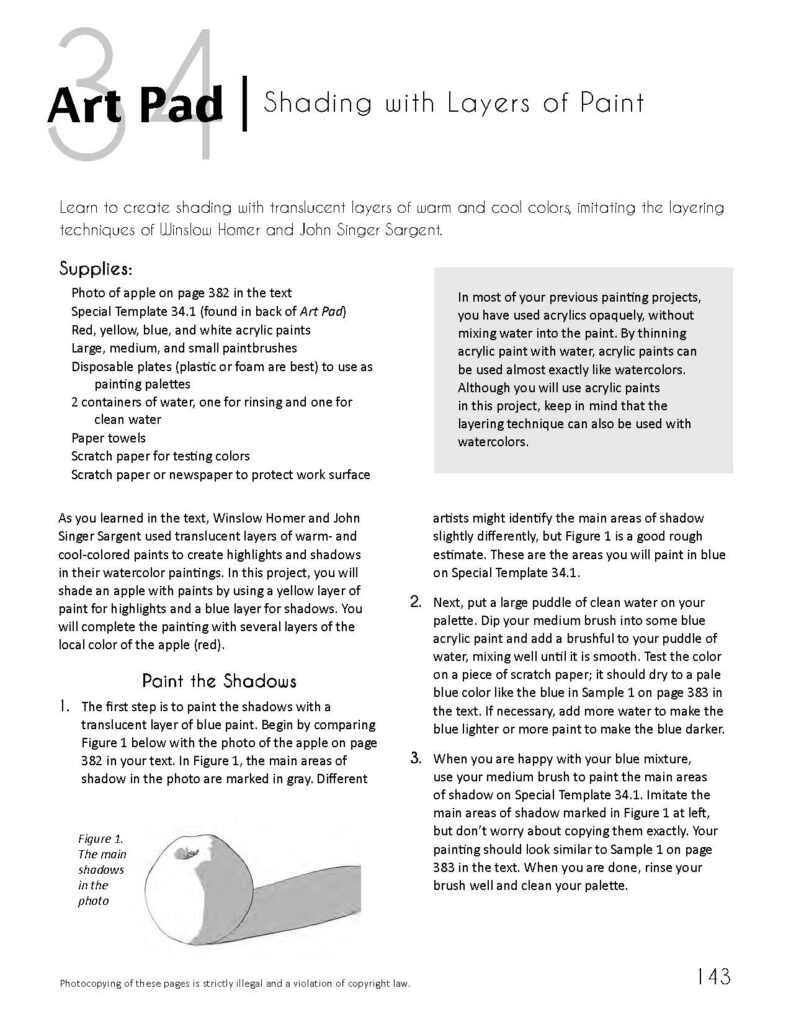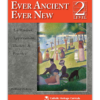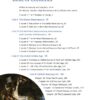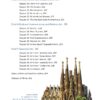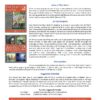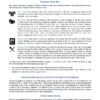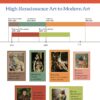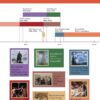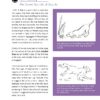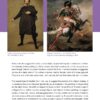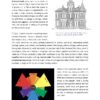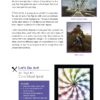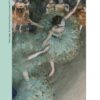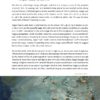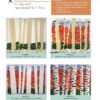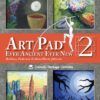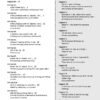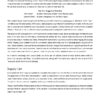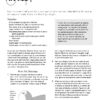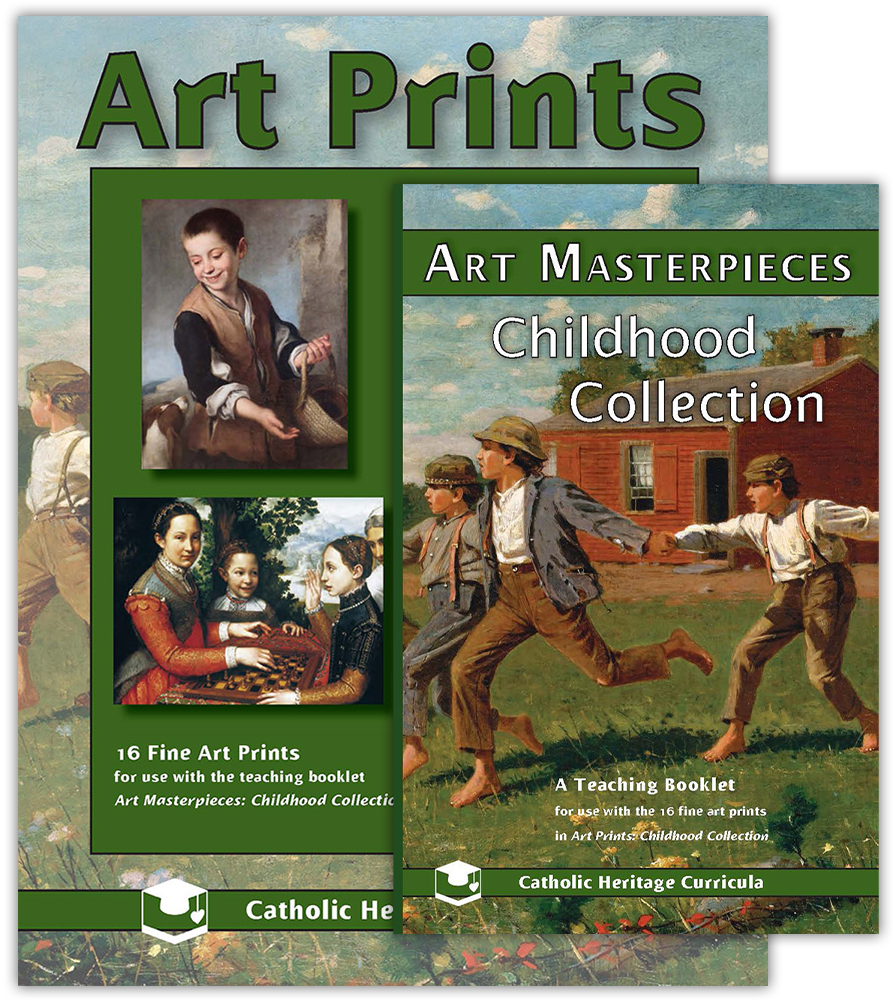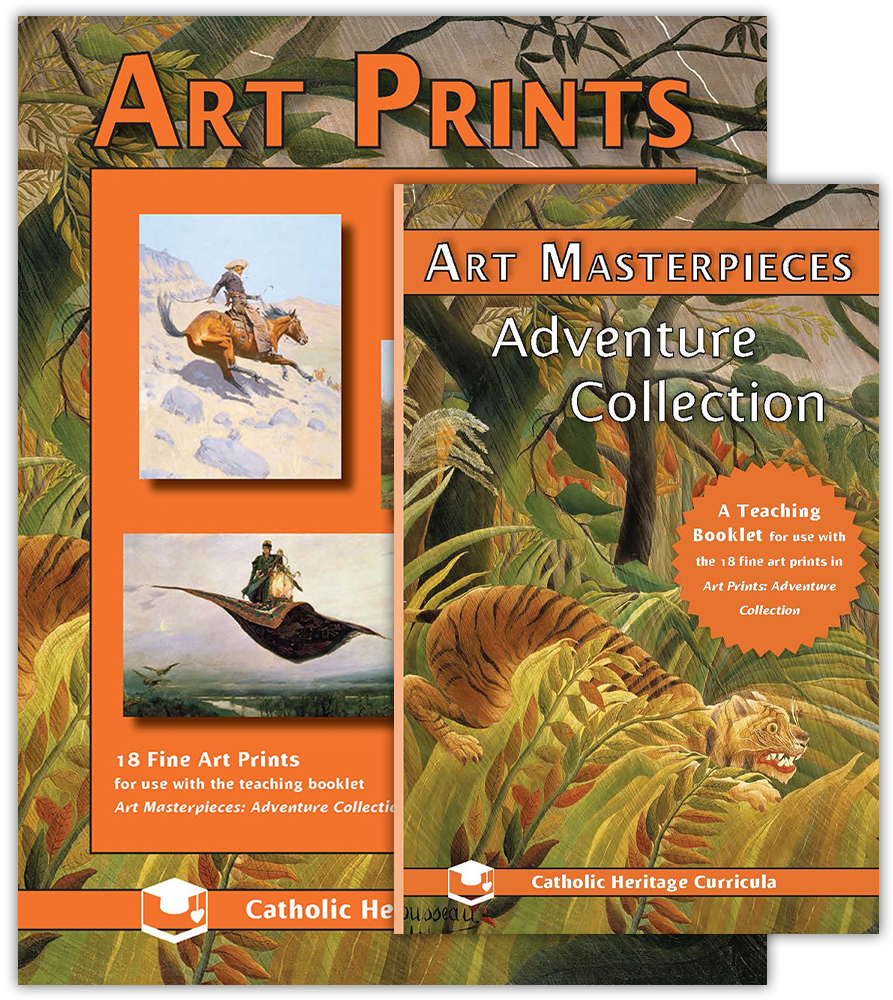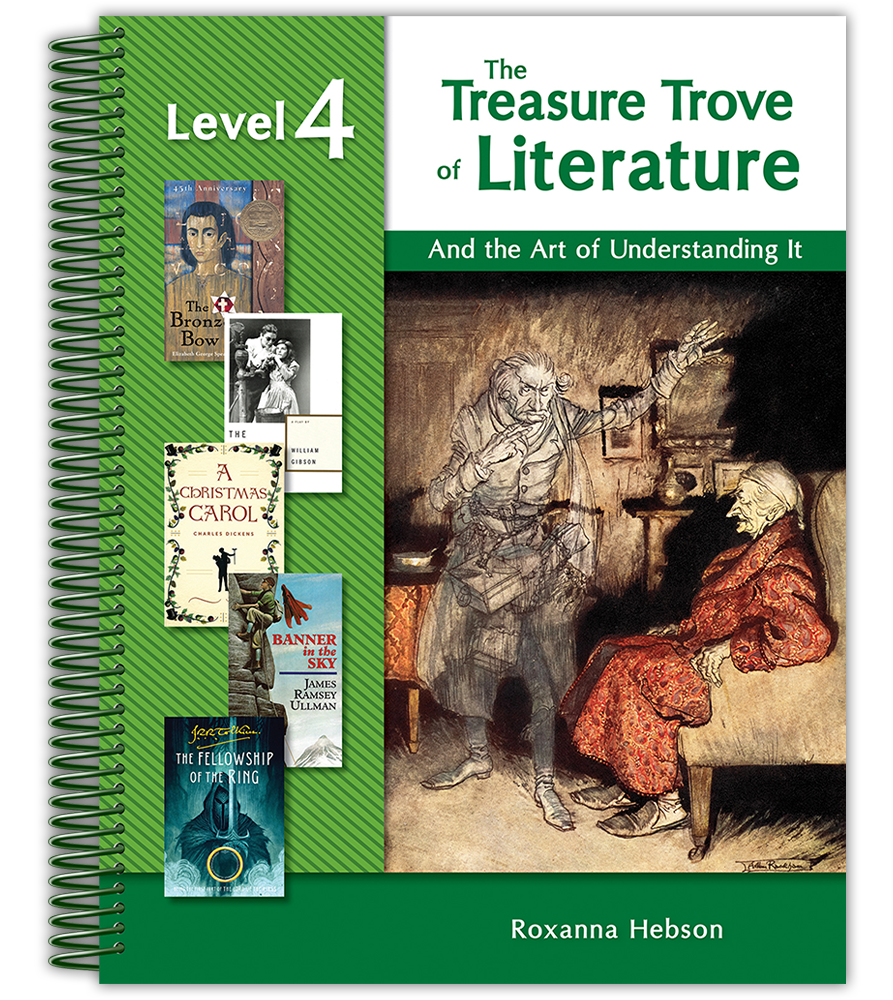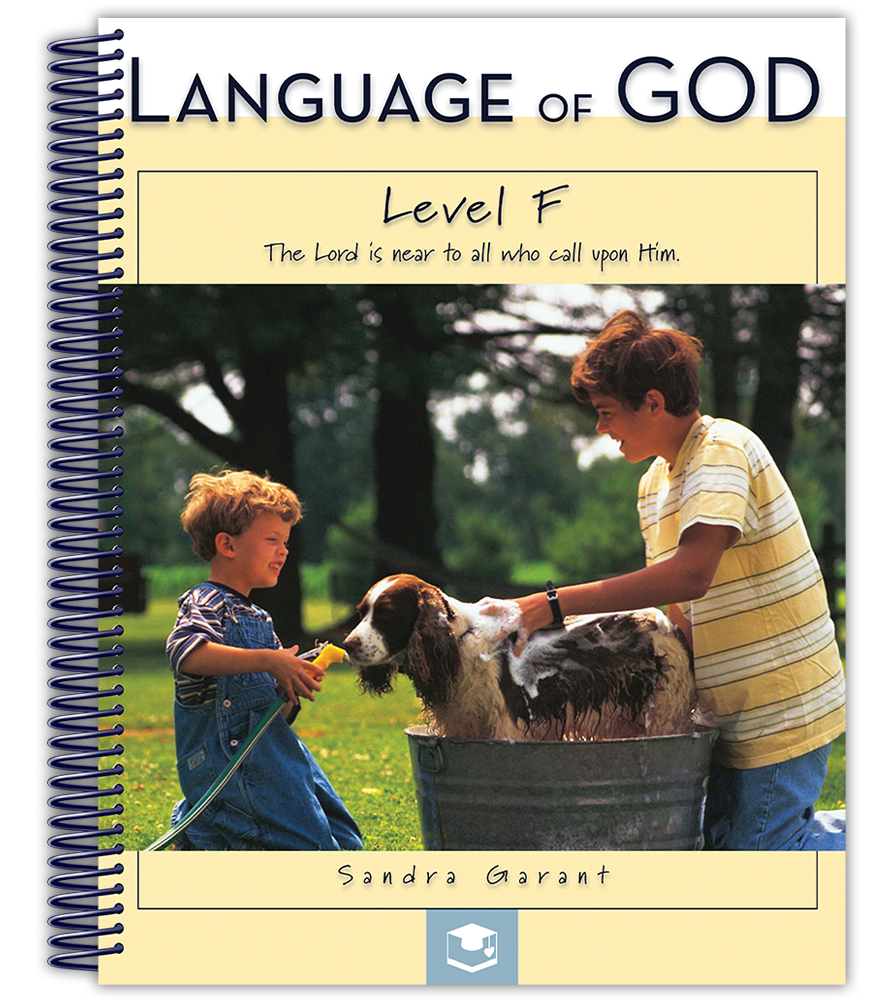“Late have I loved You, O Beauty ever ancient, ever new!” —St. Augustine
Ever Ancient, Ever New leads children to God by Benedict XVI’s “way of beauty.” Level 2 tells the “story of art” from the High Renaissance to the Modern era, paying special attention to how the art of each period was influenced by the religious and philosophical beliefs of the time. The first half of the book focuses on the magnificent art of the Baroque period, including a valuable discussion of the Council of Trent’s guidelines for sacred art. The second half summarizes the artistic movements after 1700 until the present, then concludes with a unit on American art during the 18th to 20th centuries.
Discussion of each artistic period is accompanied by:
- Detailed picture studies of period masterpieces that teach students the “language of art”
- A lesson in art theory with a focus on the principles of design (unity, variety, contrast, movement, proportion, emphasis, repetition, balance, and rhythm)
Art Pad 2 provides homeschool-friendly art projects that teach fine arts skills while reinforcing and complementing the lessons in art theory and history from the text. Art Pad 2 includes:
- 36 weeks of easy-to-follow project instructions
- Projects themed to match the textbook
- Project templates on colored cardstock and artist’s paper
- Clear lists of additional, easy-to-find supplies
Ever Ancient, Ever New, Level 2 teaches:
- Art History: High Renaissance, Northern Renaissance, Mannerism, Dutch Golden Age, Baroque, Rococo, Neoclassicism, Romanticism, Pre-Raphaelites, Realism, Impressionism, Post-Impressionism, Modern Art, and American Art
- Art Theory: Principles of design (unity, variety, contrast, movement, proportion, emphasis, repetition, balance, and rhythm); chiaroscuro and tenebrism; efficient/loose brushwork; warm and cool colors; tints, shades, and tones; color saturation/intensity; color and mood; local, optical, exaggerated, and arbitrary color; visual weight; symmetrical and asymmetrical balance; actual, implied, and visual movement; irregular rhythm through line, shape, and brushstroke; abstraction; and the rule of thirds
- Art Appreciation: Over 90 picture studies of masterpieces such as Velazquez’ The Coronation of the Virgin, David’s The Oath of the Horatii, and Childe Hassam’s The Fourth of July.
- Art Practice: Fine arts skills such as advanced human figure drawing, working with acrylic paints and oil pastels, still life drawings and paintings, extreme view and two-point linear perspective, crosshatching, contour drawings, grid drawings, using saturated and desaturated colors, creating regular and irregular rhythm, using exaggerated and arbitrary color, compositional skills, advanced painting skills, and more!
Prerequisites & Scheduling: It is highly recommended that the student complete Level 1 before beginning this program. Ever Ancient, Ever New, Level 2 is designed to be completed over two years in 7th and 8th grades, but could also be used by 6th-12th graders. Essay and research ideas for high school students are included in the introduction.
Chapter 1: The Principles of Design
Art Theory: Principles of design; review of elements of art and types of compositions
Art Project: Color Wheel Spiral
Art Skills Taught: Value scale; implied form; colored pencil skills
UNIT 1: THE ITALIAN RENAISSANCE
Chapter 2: Naturalism in the Italian Renaissance
Art Theory: Review of implied form, implied space, linear perspective, and chiaroscuro
Art Project: Infinity Hallway with 3D Objects, Part 1
Art Skills Taught: Linear perspective; drawing 3D objects
Chapter 3: Idealism in the Italian Renaissance
Art Theory: Unity
Art Project: Infinity Hallway with 3D Objects, Part 2
Art Skills Taught: Shading 3D objects; complementary colors; drawing skills
UNIT 2: THE NORTHERN RENAISSANCE, REFORMATION, AND COUNTER-REFORMATION
Chapter 4: The Northern Renaissance
Art Theory: Variety; crosshatching
Art Project: Crosshatching a Conch Shell
Art Skills Taught: Hatching and crosshatching; shading skills
Chapter 5: The Protestant Reformation
Art Theory: Repetition
Art Project: Contour Drawings of Your Hand
Art Skills Taught: Contour drawings; observational drawing
Chapter 6: Mannerism in Venice and Spain
Art Theory: Diagonal lines
Art Project: Grid Drawing
Art Skills Taught: Grid drawing
Chapter 7: Mannerism in Central Italy and the Council of Trent
Art Theory: Proportions of the human figure
Art Project: Divine Mercy Project, Part 1
Art Skills Taught: Grid drawing; colored pencil skills
Chapter 8: Early Baroque Art
Art Theory: Contrast and tenebrism
Art Project: Divine Mercy Project, Part 2
Art Skills Taught: Tenebrism; graphite shading skills; color splash effect
UNIT 3: THE DUTCH GOLDEN AGE
Chapter 9: Portraits and Bible Scenes of the Dutch Golden Age
Art Theory: Facial proportions
Art Project: Facial Portrait
Art Skills Taught: Simplified human figure drawing; drawing and shading the face
Chapter 10: Landscapes of the Dutch Golden Age
Art Theory: Sketching
Art Project: Unified Landscape Composition
Art Skills Taught: Sketching; designing a composition
Chapter 11: Still Lifes of the Dutch Golden Age
Art Theory: Still lifes and observation
Art Project: Still Life Place Setting, Part 1
Art Skills Taught: Drawing 3D objects in perspective; foreshortening; observational drawing
Chapter 12: Genre Scenes of the Dutch Golden Age
Art Theory: Emphasis
Art Project: Still Life Place Setting, Part 2
Art Skills Taught: Emphasis (color splash effect); tenebrism; colored pencil skills (grisaille shading)
UNIT 4: CATHOLIC BAROQUE ART
Chapter 13: Peter Paul Rubens
Art Theory: Movement
Art Project: Baroque Garland Project, Part 1
Art Skills Taught: Drawing skills; observational drawing; compositional skills
Chapter 14: Anthony van Dyck
Art Theory: Positive and negative space
Art Project: Baroque Garland Project, Part 2
Art Skills Taught: Linear perspective; positive and negative space; emphasis; oil pastel skills
Chapter 15: Diego Velázquez
Art Theory: Efficient (loose) brushstrokes
Art Project: Baroque Garland Project, Part 3
Art Skills Taught: Oil pastel techniques; repetition, unity, and variety
Chapter 16: Bartolomé Esteban Murillo
Art Theory: Advanced human figure drawing
Art Project: Genre Scene
Art Skills Taught: Advanced human figure drawing; observational drawing
Chapter 17: French Baroque Artists
Art Theory: Tints and shades
Art Project: Night Sky Project, Part 1: Tints and Shades
Art Skills Taught: Color value scale; tints and shades; acrylic painting skills
Chapter 18: The Exuberant Style
Art Theory: Extreme view perspective
Art Project: Night Sky Project, Part 2: Extreme View Perspective
Art Skills Taught: Extreme view perspective; value contrast; acrylic painting skills
UNIT 5: NEOCLASSICISM AND ROMANTICISM
Chapter 19: The Art of Louis XIV
Art Theory: Visual weight; symmetrical and asymmetrical balance
Art Project: Two-Point Perspective: Classical Temple or Medieval Castle
Art Skills Taught: Two-point perspective; symmetrical balance; drawing skills
Chapter 20: The Rococo
Art Theory: Color and mood; steelyard balance
Art Project: Asymmetrical Balance Project
Art Skills Taught: Asymmetrical balance; color and mood; compositional skills
Chapter 21: Neoclassicism
Art Theory: Gesture lines
Art Project: Neoclassical History Scene, Part 1
Art Skills Taught: Gesture lines; sketching; compositional skills (balance); advanced human figure drawing
Chapter 22: Romanticism
Art Theory: Color saturation
Art Project: Neoclassical History Scene, Part 2
Art Skills Taught: Color saturation; emphasis and contrast; colored pencil skills (grisaille shading)
Chapter 23: Romantic Landscapes
Art Theory: Warm and cool colors
Art Project: Romantic Landscape, Part 1: Expressive Sky
Art Skills Taught: Color and mood; expressive brushstrokes; acrylic painting skills
Chapter 24: The Pre-Raphaelite Brotherhood
Art Theory: Regular rhythm
Art Project: Tessellation Pattern
Art Skills Taught: Regular rhythm
UNIT 6: REALISM, IMPRESSIONISM, AND MODERN ART
Chapter 25: Realism
Art Theory: Irregular rhythm through line
Art Project: Romantic Landscape, Part 2: Silhouette
Art Skills Taught: Irregular rhythm; compositional skills; painting a silhouette
Chapter 26: More Realism
Art Theory: Irregular rhythm through forms and shapes
Art Project: Draw a Horse or Tiger
Art Skills Taught: Drawing and shading skills
Chapter 27: Impressionism
Art Theory: Irregular rhythm through brushstrokes
Art Project: Impressionist Birch Trees
Art Skills Taught: Acrylic painting skills (impasto technique, loose brushstrokes, hard and soft edges, masking technique); irregular rhythm
Chapter 28: Post-Impressionism
Art Theory: Local, optical, and exaggerated color
Art Project: Van Gogh Cityscapes
Art Skills Taught: Exaggerated color; oil pastel skills; color and mood
Chapter 29: Modern Art
Art Theory: Abstraction; arbitrary color
Art Project: Kandinsky Landscape, Part 1
Art Skills Taught: Abstraction; compositional skills
Chapter 30: Antoni Gaudí’s Sagrada Família
Art Project: Kandinsky Landscape, Part 2
Art Skills Taught: Arbitrary color; choosing a color scheme; working with dark, medium, and light values; acrylic painting skills
UNIT 7: AMERICAN ART
Chapter 31: American Neoclassicism
Art Project: Symbolism Still Life
Art Skills Taught: Symbolism; graphite drawing and shading skills; observational drawing; compositional skills
Chapter 32: American Romanticism
Art Theory: Animation
Art Project: Flip Book Animation
Art Skills Taught: Visualizing movement; drawing an animation
Chapter 33: American Realism
Art Theory: Rule of thirds
Art Project: Experimenting with the Rule of Thirds
Art Skills Taught: Compositional skills (rule of thirds)
Chapter 34: American Impressionism
Art Theory: Using warm and cool colors for light and shadow; the layering technique in painting
Art Project: Shading with Layers of Paint
Art Skills Taught: Layering technique (applicable to acrylic or watercolor paints); shading with warm and cool colors
Chapter 35: American Modern Art
Art Project: Wayne Thiebaud Candy Composition, Part 1
Art Skills Taught: Compositional skills (rule of thirds); observational drawing; painting skills (acrylic/watercolor)
Chapter 36: Conclusion
Art Project: Wayne Thiebaud Candy Composition, Part 2
Art Skills Taught: Painting from observation; layering technique; shading with warm and cool colors
TEXTBOOK
Product Code: ART2-T
Format: Softcover
Binding: Perfect bound
Page Count: 422 pages
Dimensions: 8.5″×11″
ISBN: 9781946207128
Returnable? Yes, view return policy.
Consumable? No, purchase one per family.
Answer key: None required.
ART PAD
Product Code: ART1-P
Format: Softcover
Binding: Tear-off pad
Page Count: 166 pages
Dimensions: 8.5″×11″
ISBN: 9781946207135
Returnable? No, view return policy.
Consumable? Yes, purchase one per student.
Answer key: None required.
Bethany Pedersen, M.A., is a practicing artist with an M.A. in Theology. She wrote her master’s thesis on sacred art in the theology of Joseph Ratzinger (Benedict XVI). She believes that all great art points beyond itself to God, the source of all beauty. She taught art for first grade through high school at an independent Catholic school, has taught art history at the college level, and enjoys drawing and painting in her free time.
Q: What art supplies are required to complete the Art Pad projects?
A: You can view a full list of art supplies for Art Pad 2 on pages 2-4 of this link.
Q: Why study art appreciation?
A: One answer is that art appreciation is a matter of passing on our heritage as Catholics. The Catholic Church was the primary patron of the arts throughout most of Western History. Knowing about the Gothic Cathedrals, Michelangelo’s Sistine Chapel ceiling, and Murillo’s Assumption is our children’s rightful inheritance.
The more fundamental answer, however, is that the experience of beauty in art helps to form the mind and heart for the pursuit of truth and goodness. Great art shapes the soul so that it feels at home with what is beautiful, true, and good. As Prof. John Crosby has said, “the child who is raised to respond to the beautiful is thereby sensitized to all that is good and right and worthy.” Ultimately, a person’s experience of beauty is an invitation from God—the source of all beauty—to seek that which is above.
This is why Benedict XVI speaks of art as “a door open onto the infinite, onto a beauty and a truth that go beyond the daily routine.” Taking time to expose our children to great art gives them the opportunity “to contemplate the ray of beauty that strikes us to the quick, that almost ‘wounds’ us, and that invites us to rise toward God” (Benedict XVI).
To make it easier for homeschooling families to include art appreciation in their curriculum, CHC has developed a two-level art program titled Ever Ancient Ever New. This program combines art history, art appreciation, art theory, and hands-on art practice.
The purpose of Ever Ancient Ever New is not merely to teach fine arts skills or develop a familiarity with famous artists, but still more to cultivate in children a sensitivity to beauty and to the way God speaks through art. The author, Bethany Pedersen, is a practicing artist with an M.A. in theology; she wrote her master’s thesis on sacred art in the theology of Joseph Ratzinger (Benedict XVI).
Q: Is this program connected with David Clayton’s Way of Beauty program?
A: Catholic Heritage Curricula gratefully acknowledges David Clayton’s Way of Beauty program as one of the inspirations for our Ever Ancient, Ever New: Art History, Appreciation, Theory and Practice courses. His distinctively Catholic approach to art history, culture, and discussion of artistic method, as described in his book The Way of Beauty, directly influenced the integration of art theory, history, and practice that you see in our courses.
Related Products
If you like the featured item on this page, you might be interested in the related materials below.
More Products for This Grade Level
If you like the featured item on this page, you might be interested in other items for the same grade level.


